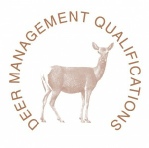DEER & WILDLIFE CONTROL
Protecting the countryside




Deer Seasons
Red deer ( Cervus elaphus )
Red deer are native to Great Britain and they are our largest deer species. Though red deer conjure up visions of the rugged highlands of Scotland there are sizeable numbers in Cumbria, East Anglia and Exmoor. The stags cast their antlers in late March to May and rub the velvet off in late August to September. The rut starts in September and will carry on until the end of October, sometimes even later. The hinds will usually give birth to one calf in late May /June, if conditions are not favourable they can quite often miss a season.
Open Season for Red deer in England and Wales
Stags 1st August to 30th April Hinds 1st November to 31st March
Sika Deer ( Cervus nippon )
Sika deer are smaller than red deer but being closely related they sometimes hybridise. Originating from Japan most of the wild populations in Great Britain have derived from escaped animals from deer parks or deliberate release. They can be found widely scattered around England with numbers in Lancashire, Dorset and East Anglia. The antler growth cycle and rutting times are very similar to those of red deer. The hinds will usually give birth to one calf in late May /June.
Open season for Sika deer in England and Wales
Stags 1st August to 30th April Hinds 1st November to 31st March
Fallow Deer ( Dama dama )
Fallow deer are thought to have been introduced by the Normans in the middle ages for food and sport. These pretty deer with their distinctive spots and palmate antlers are the ones we usually associate with deer parks. Wild fallow are found mainly in the south of England and the Midlands though small pockets can be found throughout Britain. Bucks cast their antlers in April/May and shed their velvet in late August/September ready for the start of the rut in October. Fallow bucks are well known for their rhythmic belching calls during the rut. Fallow does usually have one fawn in June/July.
Open season for Fallow deer in England and Wales
Bucks 1st August to 30th April Does 1st November to 31st March
Roe Deer ( Capreolus capreolus )
Roe deer are our smallest native deer and have a wide range all over Great Britain though they are absent from East Anglia and uncommon in the Midlands. Roe are usually found alone or in small groups rather than in herds like the three previous species. Roe bucks usually cast their antlers in November/December and rub off their velvet by March though young bucks can still be seen in velvet as late as June. The rut takes place in July to early August with the Roe does enticing the bucks to chase them for lengthy periods before mating takes place. Does give birth to 1-3 fawns during May having driven off last years off spring in April.
Open season for Roe deer in England and Wales
Bucks 1st April to 31st October Does 1st November to 31st March
Muntjac ( Muntiacus reevesi )
Muntjac, also known as '' the barking deer'' because of its repetitive dog like bark, was originally imported from Asia for private captive collections. All the Muntjac in Britain originate from escapees from these collections or deliberate release. Muntjac are a very primitive species of deer having visible canine teeth and simple curved antlers. These small deer are very adaptable and can be found in suburban gardens, hedgerows as well as large woodlands. Due to this they have gradually extended their range from central England to just about everywhere. Mature bucks cast their antlers in May/July, by September they have usually rubbed the velvet off their new set. Mainly due to their origin Muntjac breed continuously throughout the year. When the kid reaches two months the doe stops lactating and is ready to mate again. For this reason Muntjac do not have a close season though it is recommended that heavily pregnant and three quarter grown does are culled so a dependent kid isn't left behind. This may seem a little cruel but is the most humane system. No close season
Chinese Water deer ( Hydropotes inermis )
CWD originate from China and North Korea and they have the most limited in range of our deer species. These deer are popular in zoo's and private collections and escapees have set up wild populations in Norfolk, Suffolk and Cambridgeshire with isolated pockets in Yorkshire and Shropshire. CWD do not grow antlers but have long visible tusks that they use to fight each other. The rut takes place in December and the doe usually gives birth to 3 or 4 kids in May/June though there is a high infant mortality rate. As the bucks do not have antlers it is hard to distinguish males and females apart so both sexes are covered by the female season.
Open season for Chinese water deer in England and Wales
Bucks and Does 1st November to 31st March.

DSC1&2 Qualified, DMQ Accredited witness & Assessor.
Large Game Meat Hygiene certificate holder
Fully insured with BASC.